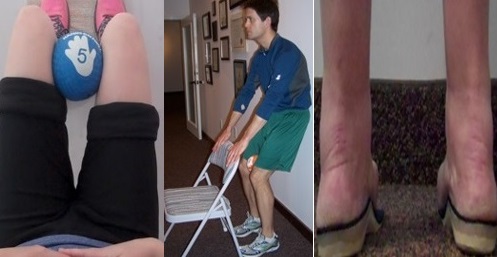Support comes in many forms. I recently completed my certification in Postural Restoration (PRC). I could not have achieved this designation without the support of my co-workers at Advance Physical Therapy, the clients I care for, my family or the faculty at the Postural Restoration Institute. Postural Restoration is an exciting and effective approach to understand and use as a physical therapist. Its influence on helping manage pain and movement related issues is re-affirming.
Here I am just after earning the Postural Restoration Certified credential with Ron Hruska, the founder of the Postural Restoration Institute (PRI), James Anderson and Mike Cantrell; all important mentors to me in learning and applying PRI.
The certification process and the completion of the courses to be accepted as a candidate have helped me to appreciate how useful Postural Restoration can be for providing support and awareness for our bodies. Postural Restoration (a.k.a. PRI) can provide clients with the tools to learn and become aware of their body position at rest and during activity. Sometimes these positional habits become problematic and contribute to painful symptoms. PRI helps the individual learn new movement patterns and build muscular and neurological support to help balance movement patterns and maintain healthier movement through life.
The concepts utilized by Postural Restoration treatments are based upon an understanding of how humans naturally develop movement patterns and coordination. This realization struck me during this past year as I watched my son develop and grow. During his first year, I saw how the use external supports helped him to learn to sit, stand, and eventually walk. Often he figured out how to use his environment to do this, other times we helped him along. Below are some pictures of him using various forms of support during these learning phases.
His learning is very similar to the type of learning I see with the clients I work with. To help clients succeed with Postural Restoration I often use concepts and positions that facilitate re-learning of movement and coordination. This learning sometimes requires giving their body support to help with re-positioning and to “turn-off” overactive parts of the body while “turning-on” under-active parts of the body. One example of external support would be laying on our back with feet on the wall to better “feel” where the spine is in contact with the mat and where the pelvis is positioned relative to the spine and hips. It may be in standing and placing hands on table surface or back of a chair to better feel weight in the feet or position of the ribcage and “core”. Further, support may come in the form appropriate shoes or an orthotic insert into a shoe to improve support to the foot and leg. Below are some pictures of support that are sometimes used with PRI programs.
By performing these activities, a person can develop control over faulty positions and movement patterns which often contribute to painful conditions. Because everyone is different, the type of support used is often unique and individualized. This is what makes my work challenging and rewarding all at the same time! Regardless of the support, the goal is the same; to help a person find and feel their body during the day and develop the support they need to stay balanced, healthy, and pain free.







